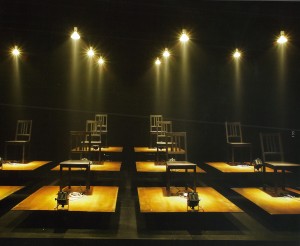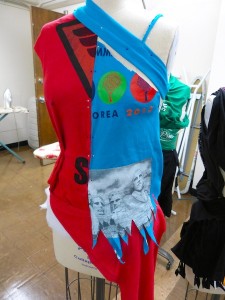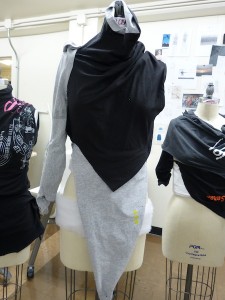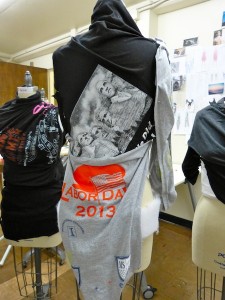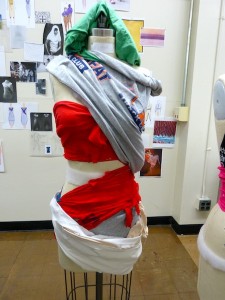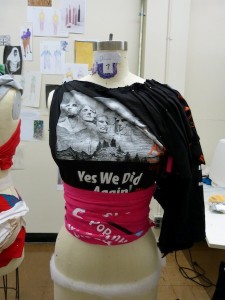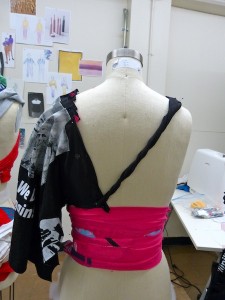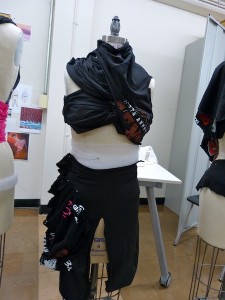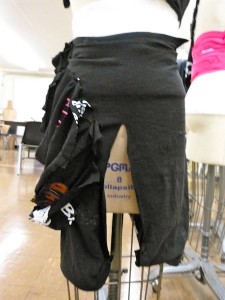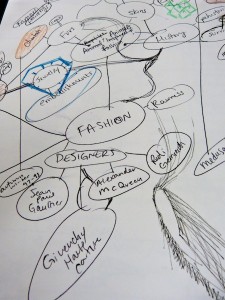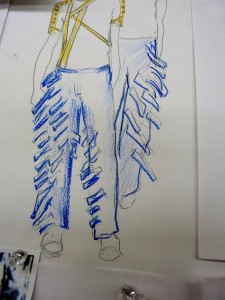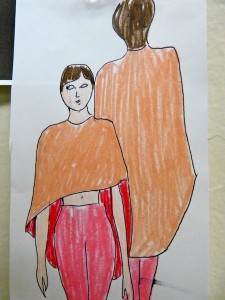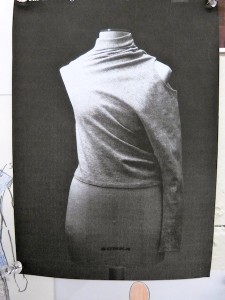Monthly Archives: October 2013
Lighting: angle, silhouette, movement, texture
Comments, Questions and Ideas are welcome! Feel free to click on the images below to enlarge.
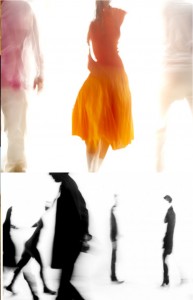
I love the idea of having movement in this white void. The space is stripped of environment for a moment and there are only bodies. Movement. The bodies are not necessarily defined. They are unidentifiable; a silhouette in space. They are known only through the movement that they make.
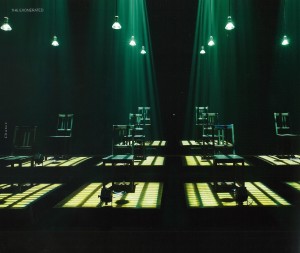
“The Exonerated” as seen in Chance Magazine
My interest in using haze is well defined in “The Exonerated” photos. The foggy effect in the air allows viewers to see beams of light and from which direction the beam is coming from, a visual that is quite intriguing to me.
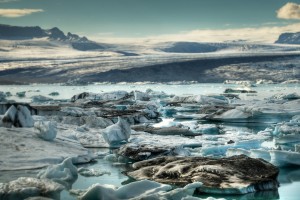
This photograph stuck with me. It feels stark, but it still has so much texture and dimension in the landscape. Textured light on the bodies is an idea I have to create more intrigue and dimension to the dancers. It pulls the performers into a relationship with the space as the light in the air reacts to their movements within the space.
Sound Thoughts I
Some times you leave a design discussion with an exact answer, or at least a definition of concept. I will admit that I have left my discussions about this project more confused than when I enter them. The technical side of a project like this can really wear on your creative ability. That being said I am going to use this blog as a mind dump and look forward to whatever reaction it returns.
Dance with no defined music, both definitely will be happening. Ideally these too things line up, yet all I can think about it how is it going to be heard. I could drop a single wide-pattern microphone (large area of sound pickup) in the pit piping it into the existing center cluster of speakers in the hall and call it a day. What the listener may perceive is a very monochromatic sound environment. It could be either good or bad. On the complete opposite end of the spectrum every instrument/sound source can have a microphone with its own unique speaker and location throughout the hall. This is the much more technically complex route, but again is either good or bad. In this approach, the issue that could be posed is that the person farthest from the speaker may or may not perceive a given sound. That being said though when an orchestra plays there is typically no reinforcement, if you are extreme stage right you may or may not hear the instrument that is opposite of you. Again who is to say this is good or bad. I thought about the practicality of going in-between a monochromatic and very directional concept throughout the show in an interpretation of the dancers themselves. I think on a very practical level that this is unlikely. The way to accomplish such a task is to have a schedule of items, as a board op may not likely understand the concept on a fundamental level. They may or may not be able to accomplish such a free form transformation each night. Seeing as how there will likely not be the time and schedule to do such a thing I think we will be forced to choose one reinforcement concept and stick with it. My gut is telling me that the most practical approach is to go at this like it is a traditional L/R sound system. This would be easy to accomplish and would allow the opportunity to spread the sound of the instruments evenly so no matter where you sit in the house you can hear all the instruments. This approach is proven albeit boring, but it does work.
Having watched the dancing and talked with the production team I am not sure specific sounds as triggered by the production staff would really line up with what we are trying to do. The music, i believe, is free form and using a great deal of non-traditional sounds will be coving the emotional aspects necessary of sound. That does not mean that it is completely out of the picture though. As a designer I tend to really dislike attempts to recreate real sounds. For example if a script reads that a boy was chained up in the corner and you hear an obvious chain I get completely distracted. Whereas when I design that scene I would have may have a prepared piano piece in which you take a metal object and pluck away at the strings layering a bed of various distorted sounds. In relation to this project, I think if the moment for a sound or a weird effect bed is fitting it will present itself over the next couple of weeks. However I don’t think we are looking for a Doorbell or wind. I suppose those sorts of effects could be used and it would completely catch the audience off guard, like turning the house lights on mid performance for no apparent reason.
About traveling musicians, technically speaking this is not something that can be decided the week of the show. If it were something simple like a vocalist, or a guitar player then a 2-week notice would be plenty of time. If it is a tuba prop that is traveling back and forth through the dancers with a speaker crammed in its bell then I would say that that information needs to be known with in the next few days if not the next week. The unfortunate part is that nifty gear like that is hard to come by and having a finite amount of resources is the practical hurdle that we will have to fight with this design. Although I am not opposed to the idea, it just takes a bit of time to manage. During the most recent production meeting we talked about possibly elevating the pit to a level where the musicians could be special with lights and then possibly made to look larger than life with projections. I worked with music producer that used the Grand VJ software when performing that integrated sound and video (through electrical waves and digital information). We would take a camera feed and put it on soloist and manipulate the performer based on the sounds sent form the mixing board as well as from the keyboardist (triggering scenes). It is a concept of integration of sound and video that we could look into for just that effect in this performance.
I have not dealt much with dance in my time as a designer; thought the times I have it has been very rigid. The videos posted are far from rigid leaving me with a bit unsure of what is my course of action. All too often a sound designer is looked at as someone to provide a sound bed or a sound effect in conjunction with the directors vision, in this project I don’t believe that to be the case. I think honestly that my role in being a successful designer is too provide the best possible set of systems that help to enhance the visions of the musicians, provide seamless integration with the other designers, and add a level of contrast only if the project sees fit to it. Or………. I could be wrong about the whole thing. That’s the beauty of this project.
Music For Thought
http://www.youtube.com/watch?v=D-JrXcTifyQ
Fashion class – costume discovery
In the fashion class we are immersed in a creative process led by Susan Becker to discover the costumes for the November Dance concert. We have been riffing off images from the blog writings that choreographers have posted, and looking at the movement on video. From this source we have created story boards of found images and our own sketches, and created mind-maps as ways of brain storming and discovering direction for the costumes. At the moment we are draping forms and creating ideas using large tee shirts. The colors you see in these images are random and not the color scheme for the costumes themselves.
The idea is to make up some prototypes that students can wear during the dance jam next Thursday evening to see them on moving bodies.
Here are some examples of found images / sketches / mind-maps and draped forms from class on Wednesday October 2nd……………
Sam Speaks- Dancer Blog About Philip’s Week
This week with Philip has been one of the most unique dance experiences I have had yet. To begin his section of the piece, each dancer performers a part of the previous choreography. Although at that moment in the piece we are each doing something different, it creates a beautiful continuity with the previous choreographers.
Working with my fellow dancers and being given the same instructions, but projecting different variations of the choreography gives such a mature and interesting feel to the piece. With the simple instruction of “jump into each other’s arms” or “nudge one another”, we have not only created a dance, but an intriguing and powerful piece of art. The choreography of sitting on our knees, while looking side to side and moving forward and back seemed simple as an instruction, but with the right intention and connections between all of us dancers together, it is beautiful artistry that I know will capture the eye of the audience. I really enjoyed working with Philip because he tends to choreograph by feeding off of the the energy of his dancers. His unique choreographic composition of movement was an honor to be apart of.
Breath
I always start with a collective warm up and on my first rehearsal we started with a focus on the breath. We spend most of the rehearsal doing some basic experiments with breath and ended up working in pairs. From there we worked on creating duets and one trio with the only instruction that the movement had to feel good. The dancers could decide to make a partner duet or make a phrase together. These duets had a strong sense of presence and attention to body and relationship. In the next rehearsal I started to put the material together and manipulated it minimally, mostly through speed and spacing. It was a satisfying and moving experience to work with the group. I was hoping to give them material that they could rest in at some point in the piece.


